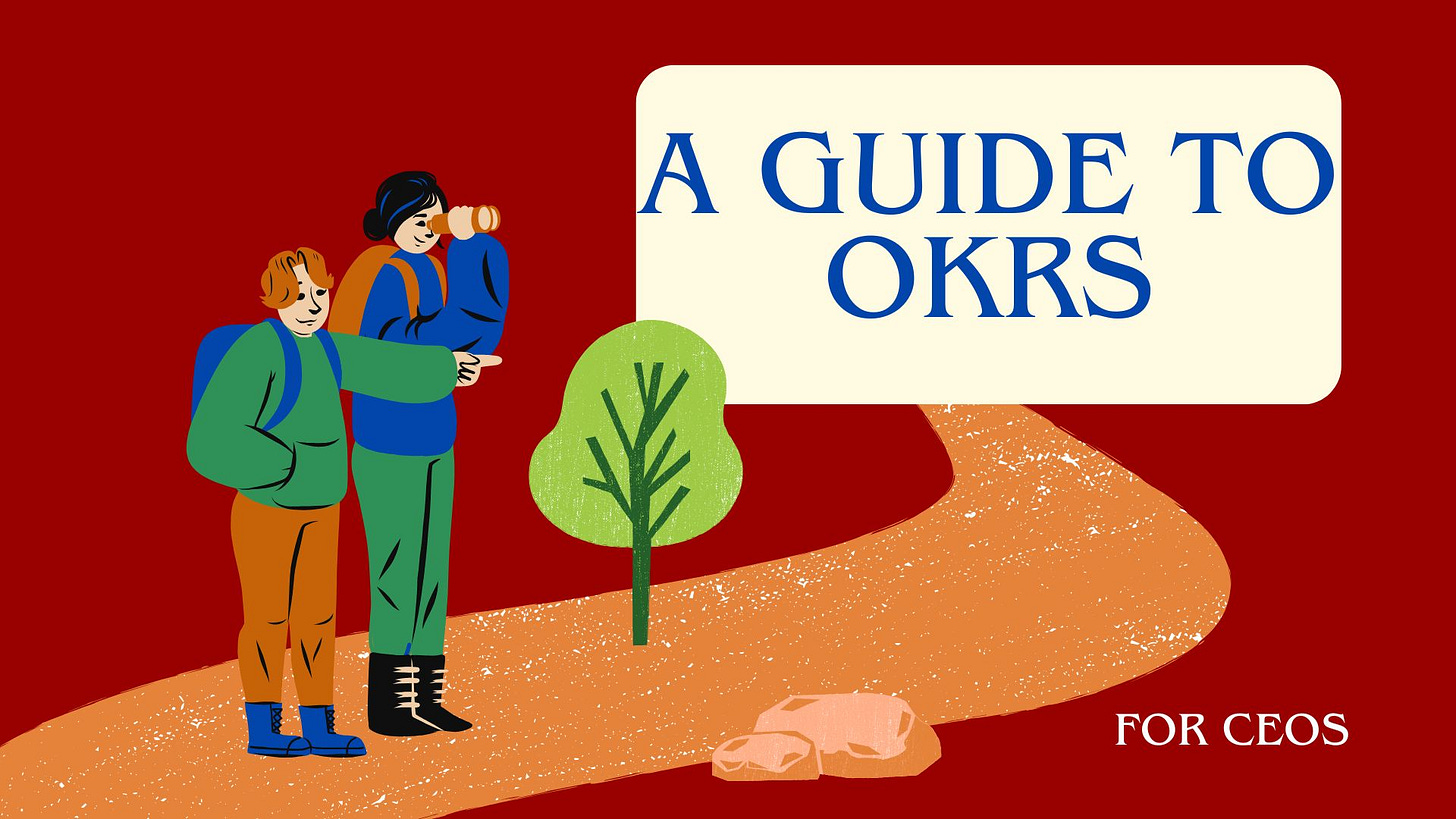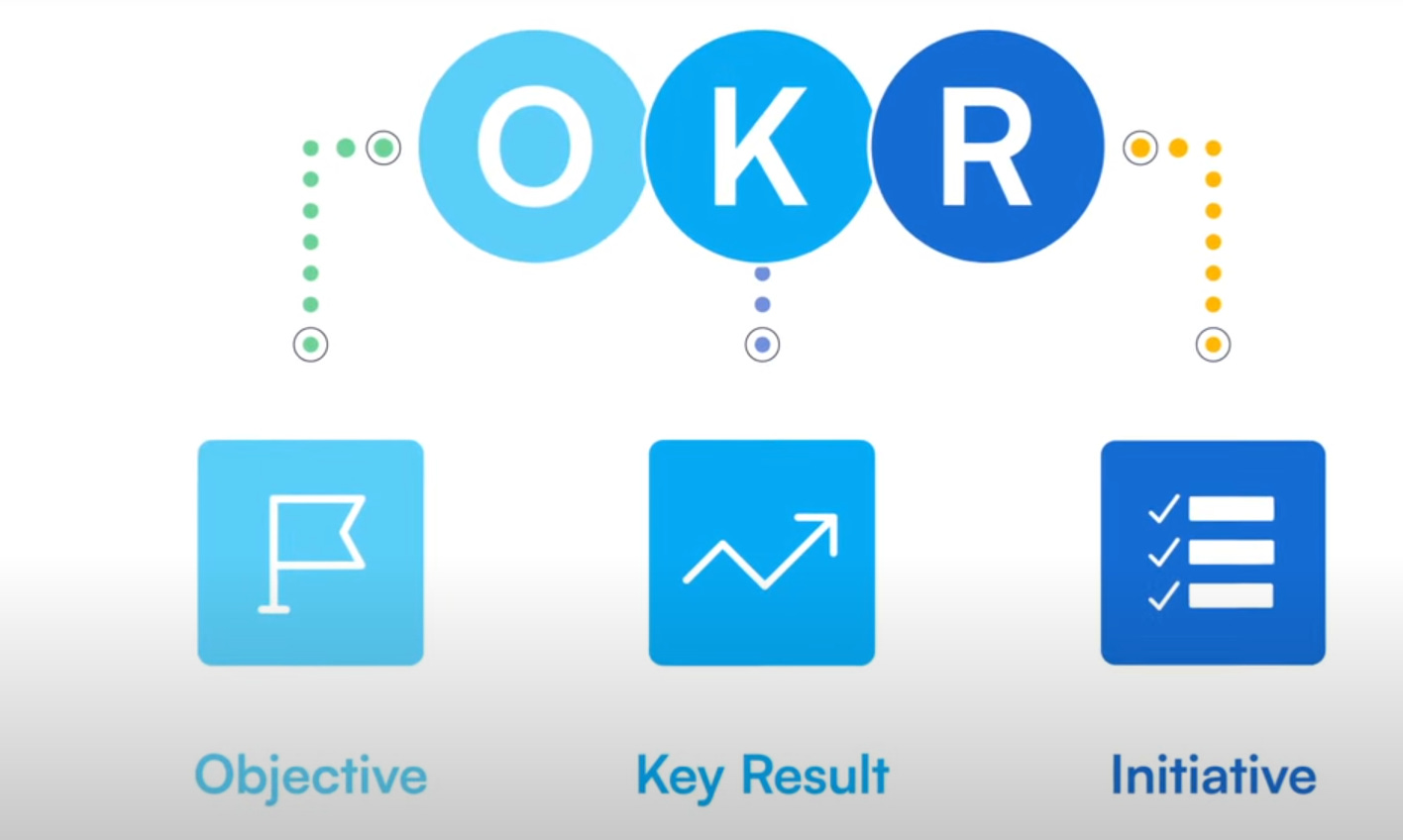In today's business environment, organizations face intense competition, employee uncertainty is at an all-time high, CEOs are under pressure, HR teams struggle to drive performance, and managers push their teams harder than ever.
This scenario is chaotic, akin to a leader imposing tariffs, cutting financial support, and threatening global stability.
The pressure can be so overwhelming that CEOs lose focus on both their strategic objectives and employee well-being.
However, with the right approach, this challenge can become an advantage for your company.
One of my core mantras is: "No one should struggle alone." Often, before a business reaches a crisis point, warning signs emerge.
The key to avoiding such pitfalls? Adopting and fully embracing OKRs.
Yes, you need to adopt OKRs and make them an integral part of your company’s DNA.
When implemented effectively, even in turbulent times, OKRs can drive success while shielding employees from economic pressures.
How Can You Do This?
In today’s guide, I’ll show you how to apply, adopt, and integrate OKRs seamlessly into your organization.
What are OKRs?
OKR stands for Objectives and Key Results, a powerful goal-setting framework used by some of the world’s most successful companies, including:
Google
Microsoft
Adobe
Amazon
Atlassian
Dell
Deloitte
Dropbox
Facebook
GE
GoPro
Intel
LinkedIn
Netflix
Samsung
Slack
Spotify
Uber
Why do these companies thrive even in tough economic times? Because they’ve adopted OKRs and consistently track their progress.
I know when I say "sleeping with OKRs," it might sound odd, but what I mean is that OKRs should be monitored, reviewed, and refined regularly. They must become second nature to your leadership team.
Where did OKRs come from?
The OKR framework was pioneered by Andy Grove, former CEO of Intel, in 1983. Recognizing its effectiveness, Google’s founders quickly adopted it, and the rest is history. Since then, countless successful companies have embraced OKRs to drive growth, alignment, and efficiency.
Now, let's dive deeper and explore how you can effectively implement OKRs in your business.
Understanding the Framework
Objective – What do you want to achieve?
Key Results – Measurable benchmarks that indicate whether you have achieved your objective.
Initiatives – Specific actions or tasks you will undertake to achieve your objective.
My approach to goal-setting
1. Goal – What is your ultimate goal?
2. Objective – What do you need to achieve to reach your goal?
3. Key Results – What measurable outcomes will determine success?
4. Initiatives – What specific tasks will help you achieve your objectives?
Example 1: Workday
Recently, Workday, a finance and human resources software company, laid off 1,700 employees. According to reports (USA Today), the company’s reasoning was to expand its global presence and prioritize AI development.
If I were advising Workday’s CEO, Carl Eschenbach, here’s how I would structure their goal-setting framework to achieve their intended expansion without unnecessary layoffs:
Workday's OKR Framework
1. Goal
Expand global presence and prioritize AI demand.
2. Objectives
Increase global brand visibility through targeted marketing and industry events.
Enter three new international markets within 12 months.
Hire AI experts and business development teams in key global markets.
Develop and launch AI models tailored to high-demand industries (e.g., healthcare, finance, logistics).
3. Key Results
Achieve a X% increase in revenue from international markets within a year.
Hire 10+ AI experts and business development managers across key global markets.
Increase brand engagement by X% through global marketing campaigns and AI-focused events.
Reduce AI processing time by X% to enhance usability and efficiency.
Ensure AI solutions comply with X% of international regulatory standards in new markets.
4. Initiatives
Identify high-potential international markets and develop localized market entry plans.
Build alliances with AI firms, cloud providers, research institutions, and enterprise clients to accelerate expansion.
Recruit AI experts, engineers, and sales teams in key regions and invest in global workforce training.
Invest in AI research and development to stay ahead of emerging trends and competitive advancements.
By following this structured framework, Workday could achieve its expansion goals without resorting to unnecessary layoffs.
Example 2: Starbucks
Starbucks has also been under scrutiny for frequent layoffs. This has created uncertainty among employees, making it risky to take financial commitments like loans due to job insecurity.
In a recent layoff announcement, Starbucks outlined two primary objectives:
Ensure all work has a clear and accountable owner who can make decisions.
Reduce complexity and eliminate silos within the organization.
If Starbucks were to hire me as a consultant, here’s how I would structure their goal-setting framework to achieve these objectives effectively:
Goal
Accountability and collaboration.
Objectives
Establish clear ownership of all workstreams to improve decision-making speed and accountability.
Reduce organizational silos and complexity to enhance collaboration and efficiency across teams.
Key Results
Ensure X% of projects and initiatives have a designated accountable owner by [specific date].
Reduce decision-making turnaround time by X% within [specific timeframe].
Improve cross-functional project efficiency by X%, measured by completion timelines and feedback.
Decrease redundant processes and overlapping work by 20%, based on an internal audit.
Initiatives
Implement a company-wide RACI (Responsible, Accountable, Consulted, Informed) framework for all projects.
Conduct leadership training on decision-making and ownership best practices.
Develop a centralized system for tracking project ownership and accountability.
Organize regular cross-functional team meetings to foster collaboration and break down silos.
Streamline internal workflows by eliminating unnecessary approval layers.
If the company adopts this approach, they will significantly enhance efficiency and decision-making, positioning themselves for long-term success.
Example 3: Amazon
Recent layoffs at Amazon and Starbucks suggest a trend of workforce restructuring.
Since 2022, Amazon has cut nearly 27,000 jobs, a staggering number that raises concerns about long-term job stability at these companies.
It prompts employees to question whether the work environment is sustainable or if deeper operational challenges exist.
That said, if given the opportunity to work at Amazon, I’d still recommend taking it. The experience gained there can be invaluable for career growth.
In January 2025, Amazon laid off a small number of employees in its communications and sustainability units. Their stated goal was to move faster, increase ownership, strengthen company culture, and improve customer connections.
How i would frame their goals for maximum impact
Goal
Team empowerment
Objectives
Accelerate team efficiency and decision-making.
Foster a culture of accountability and ownership.
Strengthen company culture and collaboration.
Improve customer understanding and responsiveness.
Key Results
Reduce average project completion time by X%.
Increase employee satisfaction with ownership and decision-making by X% (measured via surveys).
Improve cross-team collaboration scores by X% (measured via engagement surveys).
Increase customer satisfaction scores by X% (measured via NPS or CSAT).
Initiatives
Implement agile workflows and streamline approval processes.
Establish clear ownership frameworks for projects and initiatives.
Organize company-wide culture-building and collaboration sessions.
Increase direct customer engagement opportunities (e.g., customer advisory boards, user research programs).
If Amazon adopts this structured approach, they can achieve their objectives while minimizing disruption from layoffs.
As a CEO or founder, it's crucial to engage your employees in driving your company’s objectives forward.
Here are the steps you can take to ensure alignment and support from your team
1. Choose the right setting for goal discussions
Have your personal assistant book an outdoor facility for a strategy meeting with your department heads.
Avoid boardrooms, as they may limit creativity.
An outdoor setting encourages broader thinking and helps the team visualize the company’s bigger picture.
2. Pick the best meeting days
Schedule the meeting on a Tuesday or Friday.
These days have been shown to foster engagement, generate better ideas, and enhance productivity.
3. Define key corporate objectives
During the meeting, ensure that every department head shares their insights.
Conclude by identifying three or four key corporate objectives, no more than four, to maintain focus.
As the CEO, take an active leadership role rather than leaving the discussions solely to department heads.
4. Communicate the objectives to employees
Once the corporate objectives are set, present them to all employees.
This transparency allows them to understand the company’s direction and align their individual and departmental goals accordingly.
5. Cascade goals to departments
Hand over the corporate objectives to department heads, ensuring they break them down into specific departmental and individual objectives.
6. Host a company-wide alignment meeting
Organize a company-wide meeting where managers, supervisors, and department heads share their objectives.
This ensures that all employees understand how different departments contribute to the overall organizational goals.
7. Implement a task management system
Encourage employees to use a task management system to track their daily activities.
Tools like Zoho People’s "Task" module can help monitor both individual and team performance in relation to company objectives.
8. Conduct monthly check-Ins with HODs
Hold monthly meetings with department heads to review progress on individual and departmental objectives.
This helps identify and address any deviations from the broader company goals.
9. Quarterly CEO-led progress reviews
As the CEO, schedule quarterly progress review meetings.
Do not delegate this responsibility entirely to department heads, your direct involvement ensures the company stays on track and aligned with its mission and vision.
10. Year-end performance analysis
In the final quarter, request data-driven reports from all departments. Review the company’s achievements against its objectives.
If any goals were not met, carry them forward with revised strategies for the upcoming year.
By following these steps, you will foster a goal-driven culture, ensure accountability, and position your organization for sustainable growth.
This roadmap is clear and has been proven to work.
According to Alex Brogan, most goal-setting frameworks fail because they don’t effectively bridge the gap between strategy and execution.
As a founder or business leader, it’s your responsibility to close this gap and ensure that both strategy and execution are in place and followed diligently.
Now that you have the framework, the next step is documenting it.
Proper documentation makes it easier to track progress, identify gaps, and make necessary adjustments.
Key elements of an OKR document
Objective – Clearly define what you aim to achieve.
KPIs (Key Performance Indicators) – Identify measurable metrics to track success.
Strategies – Outline the key strategies that will help achieve your objectives.
Responsible Person(s) – Assign accountability to specific individuals.
Resources – List the essential resources needed to accomplish the objective.
Success Measures – Specify how you will evaluate the success of the objective.
Risks – Acknowledge potential risks and challenges associated with the objective.
Opportunities – Identify potential opportunities that may arise from overcoming these risks.
Summary
Setting up a well-structured OKR ensures that employees align with organizational goals.
When properly planned, executed, and monitored quarterly, this strategy can yield significant results.
OKRs aren’t just for large organizations; they also work for small businesses, solopreneurs, and individual employees.
Here’s an example of a personal OKR for hiring the right talent
Goal
Hire the right talent
Objectives:
Improve the efficiency and effectiveness of the hiring process.
Attract top talent that aligns with company culture and values.
Reduce time-to-hire while maintaining high-quality standards.
Key Results
Achieve a X% hiring success rate (new hires meeting performance expectations within six months).
Reduce time-to-fill positions from X days to Y days.
Increase offer acceptance rate to at least X%.
Ensure at least 80% of new hires stay with the company for over a year.
Initiatives
Optimize job descriptions and enhance employer branding.
Implement structured interview processes and standardized assessments.
Expand sourcing channels (referrals, job boards, LinkedIn, etc.).
Train hiring managers on effective interviewing and candidate evaluation.
Use data and analytics to track hiring performance and improve decision-making.
If you found this guide valuable, share it with fellow business leaders.
Have questions or suggestions?
Drop them in the comment box below!







